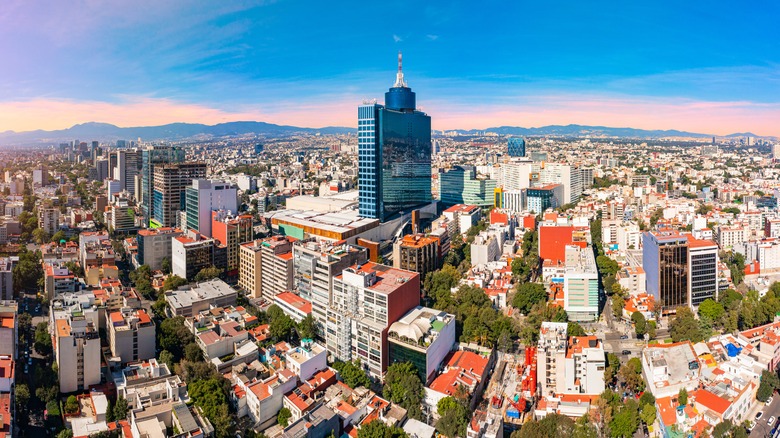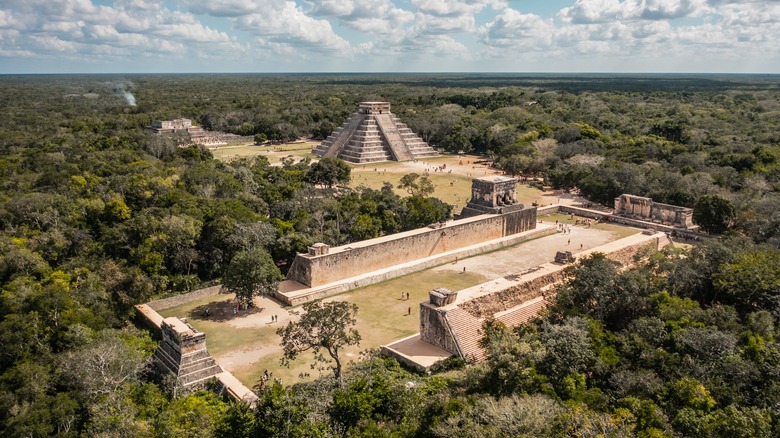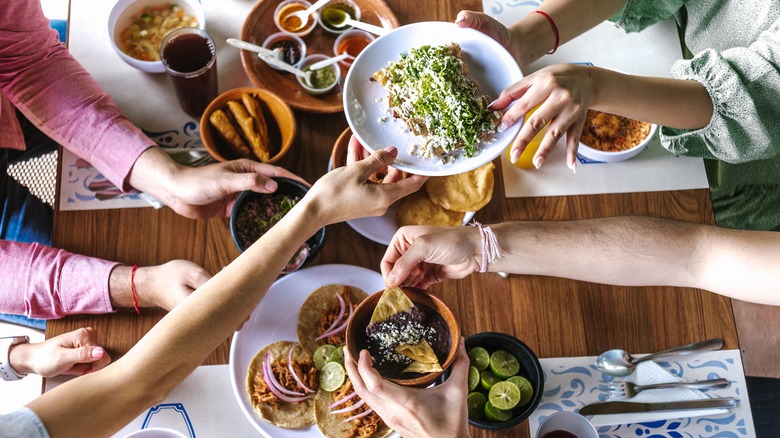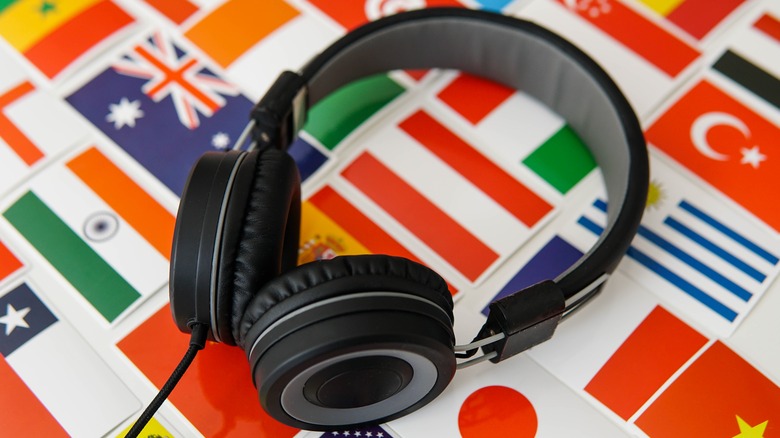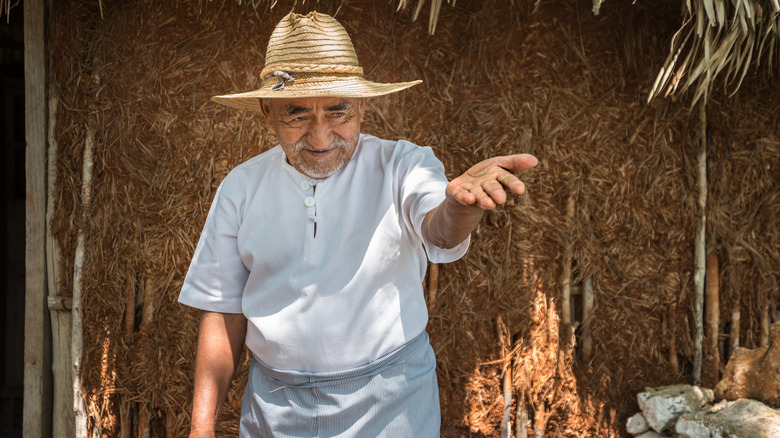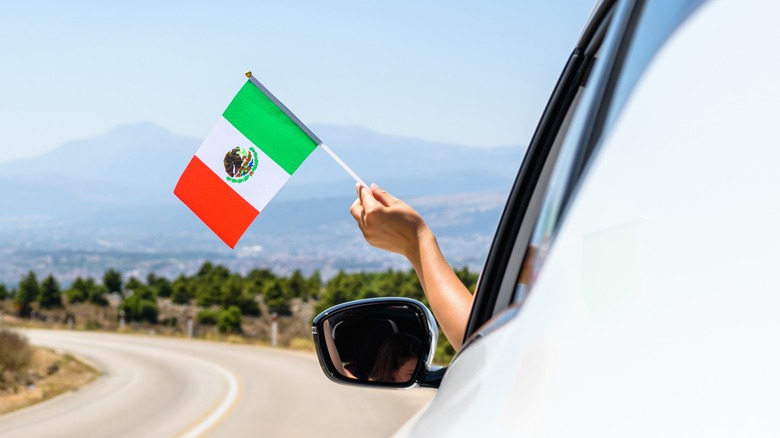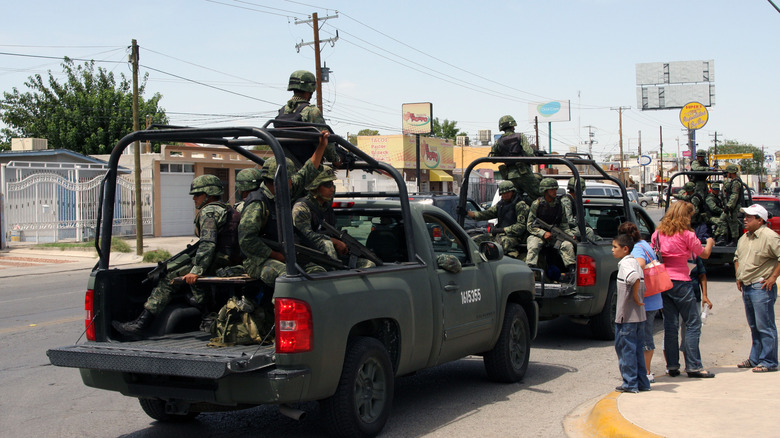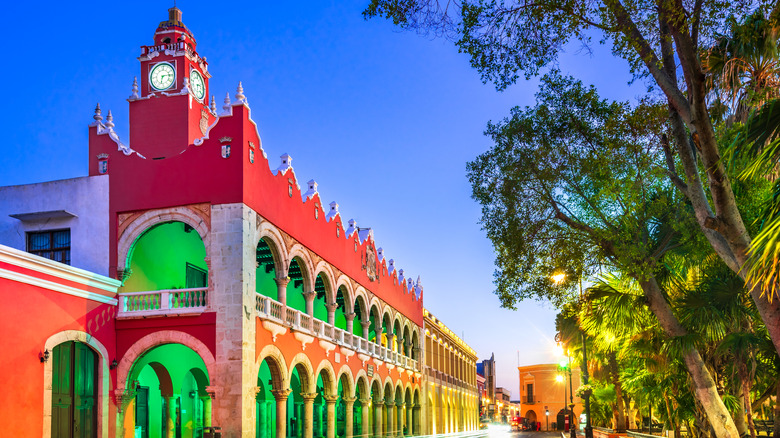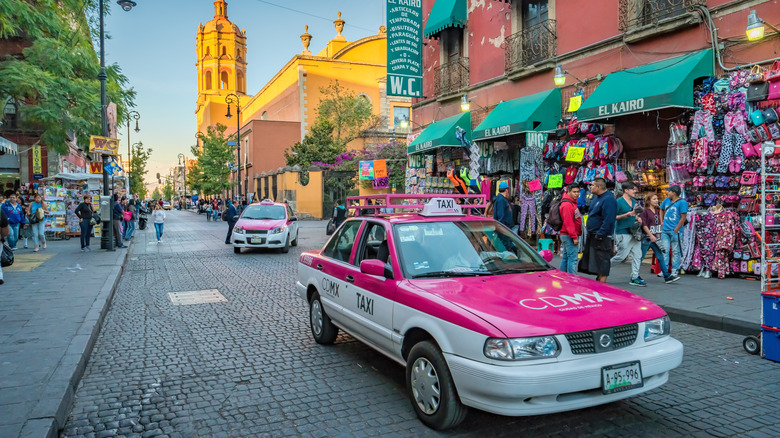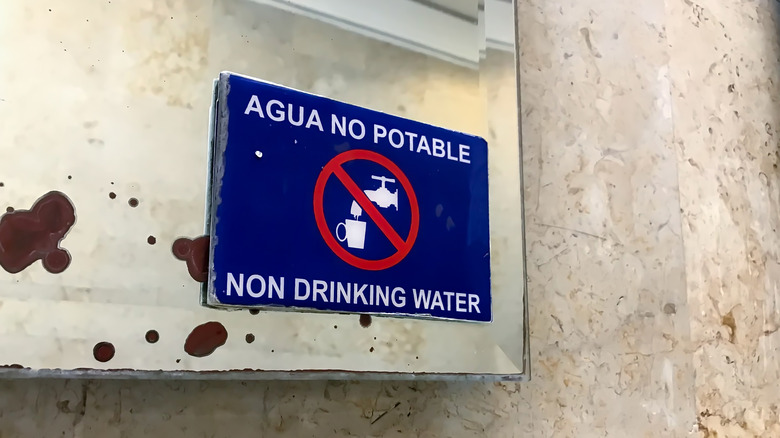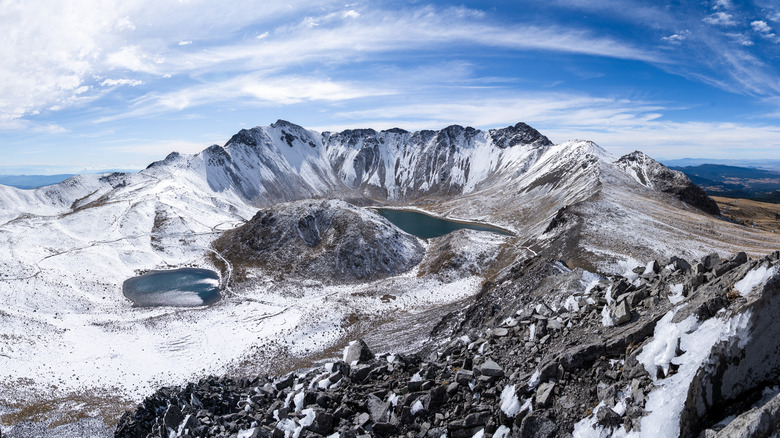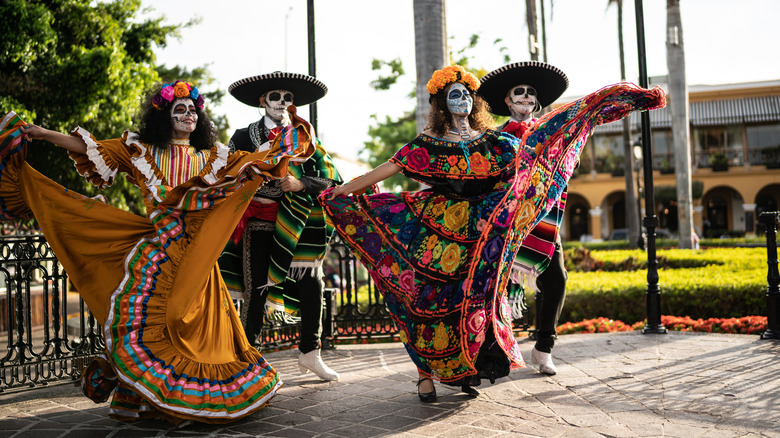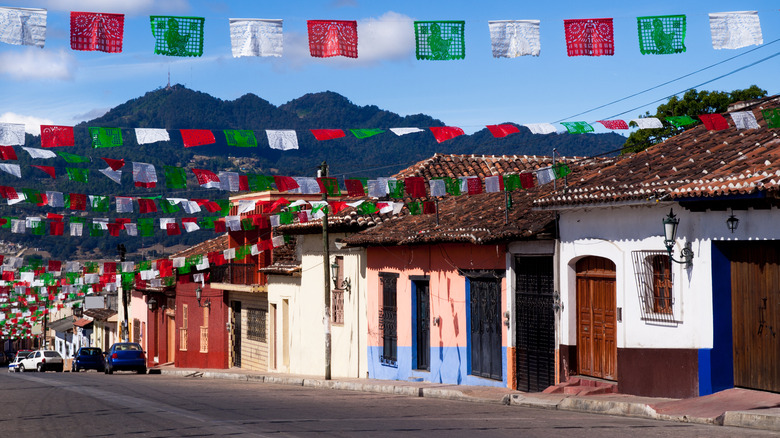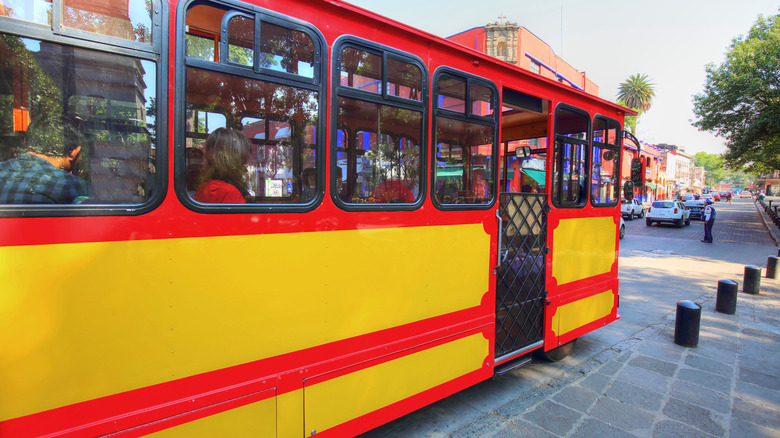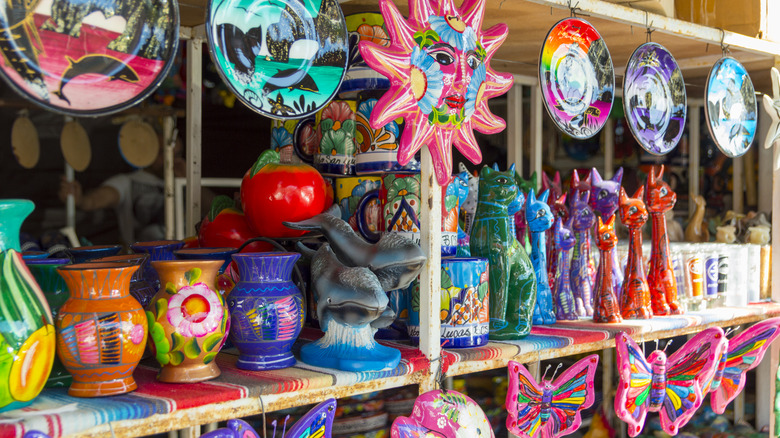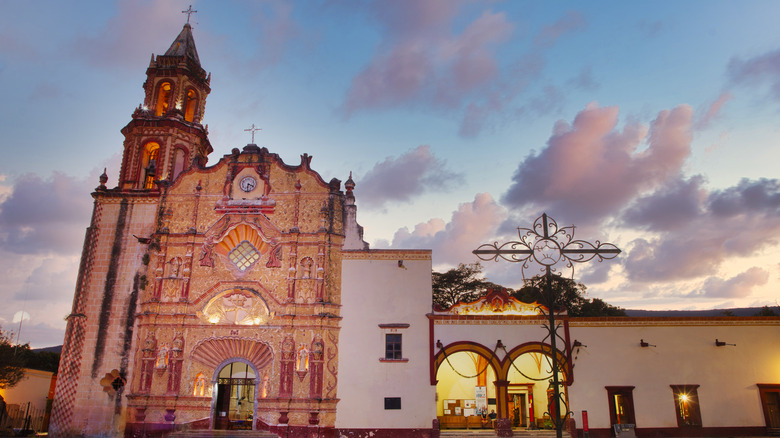Mistakes To Avoid When Visiting Mexico
Historically, Mexico has been integral to the evolution of the United States. Mexico and the United States continue to be closely connected, and Mexicans and their descendants comprise the majority of Spanish-speaking residents of America, more than 60%, according to a 2021 study by Pew Center Research. It's also a tremendous vacation spot chosen by millions of Americans every year. Tourists come here to experience incredible beaches fronted by calm, clear seas, explore ruins built by civilizations that thrived millennia ago, and savor the delicious and varied cuisine. Getting to Mexico is also blissfully easy, thanks to direct flights from many U.S. cities.
Given the common ground between Mexico and the U.S., visitors might assume that travel between the two is plain sailing, like swapping one familiar place for another. But going to Mexico, a country with an amazingly rich, varied, and deep historical culture (and, pardon the repetition, incredible food), requires throwing assumptions out of the window. Do that, and you will have a much more nuanced, authentic, and enjoyable vacation. Sounds like a dream come true.
Foregoing the ruins
For anyone interested in anthropology and historical architecture, the many civilizations that have lived in this land will be particularly interesting. The Mayan culture is thousands of years old, while the Aztec empire became a dominant entity centuries later, and evidence of both civilizations' imprint on Mexico is seen all over the country. It would be a shame to miss out on such historical treasures when visiting the country, even if you don't enjoy seeing old buildings, so we suggest making an exception here if your travel itinerary allows it.
More than 3,000 years ago, the Mayan people cultivated corn and beans and later built small-scale cities with ordered buildings and places reserved for leisure. The pyramids that the Mayans built defy belief, but thankfully, the techniques used have allowed them to endure. Among the most impressive are Chichén-Itzá in Yucatán state and Palenque, located in Chiapas, a southern state bordering Guatemala. Close to Mexico City, the grand city of Teotihuacan, which pre-dates the arrival of the Spanish, is a Unesco World Heritage site, and the complex of temples and pyramids is a showstopper.
Frequenting international chains
For some travelers, finding an outpost of their favorite hotel and restaurant chain when visiting another country is like stumbling upon an unexpected gift. For others, it's a disheartening episode, further proof of the homogenization of the planet that makes all our experiences blur into each other. In Mexico, visitors will find many international hotel and food chains across the country — though don't expect to come across Taco Bell here — but should bypass them in favor of local businesses, from fast-food chains to fine dining.
The Posadas Group, for example, is a Mexican company that runs hotels and resorts throughout the country. Chicken fans can sink their teeth into wings and thighs at Pollo Feliz, while the spicy/sour seasoning Tajín dazzles in some of the chicken offerings at Pollo Pepe. Tacos are the lure at El Pescadito Taquerías, and for more local fast food, visit a "comida corrida" (it loosely means "running food.") These quick, reasonably priced lunch spots are very popular in Mexico City.
Sticking to English
There are no precise numbers on how many people in Mexico speak conversational English, but it's a safe assumption that not everyone that you encounter on your trip will be comfortable conducting a chat in "Inglés.' Finding an English speaker in large tourist areas like Cancún, Acapulco, and Los Cabos shouldn't be difficult. Outside major centers for overseas visitors, the likelihood rapidly shrinks. In practical terms, this means visitors should learn some Spanish, not just because it will be the only way to communicate but also because it's the right thing to do.
We wouldn't expect a visitor from a country in Europe to come here and try to communicate with us in Serbian, Hungarian, or Finnish, for example, so why should residents of Mexico be expected to do the same? You don't need to be fluent in Spanish, but a few simple words and phrases will lend the trip an entirely different sensibility and connect you to the locals more resolutely.
Being impolite
Courtesy and warmth are central parts of local identity, and these are extended as much to visitors as to family and friends. Mexicans are likely to say "con permiso" (used to mean "excuse me") if they need to get by you when there isn't much space, and "perdón" (an apology, akin to "pardon") if they accidentally knock into you, or brush by you too closely. They will also address you as "señor" or "señora," the equivalent of "sir" and "ma'am." Out of respect, travelers should show good manners in return.
One obvious way is by greeting people you encounter, whether with a simple "Buenos dias" as you pass them in the morning or a "gracias" if they hold open a door. While taking public transport, always give up your seat to someone older. Mexicans are justifiably proud of their food, and it is considered rude not to try food offered to you unless, of course, you have dietary restrictions that don't allow that, something best established ahead of time. And smile when someone takes the time to greet you, as nobody likes dealing with a grumpy tourist.
Not tipping
There are many places worldwide where the concept of tipping seems as bizarre as wearing a down jacket when wandering around Florida in the summer. In Asia and Europe, for instance, tipping isn't always commonplace, though this shouldn't deter a traveler from offering a little extra if the occasion or service warrants it. In the United States, tipping is firmly entrenched in many facets of life.
It is part and parcel of daily transactions involving anyone in the service industry, a payment that most of us rarely think twice about. With that in mind, refusing to tip when on vacation is hard to justify unless the service is particularly questionable. Wages aren't extraordinarily high in Mexico across many sectors, and this includes the service industry, where tips go a long way towards making these positions financially sustainable for employees — a good rule of thumb is to tip 10-20% of the bill.
Not driving
If you can handle a four-wheel automobile in the United States, you should have no problem doing the same in Mexico. Driving around Mexico is not at all complex; for starters, the steering wheel and driving lanes are even on the same side as the U.S. If you live close to the border, you can drive your own vehicle into the country, though chances are you will need to purchase a separate insurance policy to ensure you have coverage in Mexico.
Many highways and major roads in Mexico are in excellent condition, but for smaller roads, potholes might appear, which is no different from the roads in New York City! Getting behind the wheel over the border will allow you a new level of freedom, let you see a different side of the country, and possibly let you explore more in a shorter time since you won't be reliant on external timetables or schedules. Plan to drive only during the day, which is always a wise move in an unfamiliar place.
Believing the news
A common opinion, thanks in part to sensationalist media stories, is that crime and killings are rampant in Mexico. The murder rates in our southern neighbor are higher than in the United States, but rates of serious crime involving tourists are low. Some of the lowest homicide rates in the country are in the states of Baja California Sur, home to Los Cabos and its popular outdoor activities, and Yucatán, where travelers will find the Mayan complex of Chichén-Itzá.
The U.S. Department of State also distinguishes, on its website, the level of danger in different parts of the country. States such as Sinaloa and Guerrero are among those that American citizens are warned not to visit due to the prevalence of crime and kidnapping, while places such as Mexico City and Quintana Roo, where Cancún and its gorgeous beaches are located, are less prone to this type of threat. More often than not, the advice is the same in Mexico as anywhere else, namely, use common sense and keep your wits about you.
Visiting the usual suspects
As tourism in Mexico has steadily grown, certain destinations have captured the lion's share of visitors. Think of places like Cancún, Cabo San Lucas, Puerto Vallarta, and Oaxaca, destinations that are now impressively geared up for tourism, helped immensely by direct flights from the United States and other countries. Obviously, these tourism hot spots are worth checking out — for their beaches, nightlife, culture, food, etc. — but it's important to note that these are not the only options.
Why not consider somewhere different, a place that doesn't immediately come to mind when thinking of Mexico? Mérida, in the state of Yucatán, has fine museums and gorgeous colonial architecture. Nearby, Izamal has grand plazas and impressive Mayan ruins. Manzanillo, set on a curling bay southeast of Puerto Vallarta, has some good beaches and a pleasantly laid-back coastal vibe less evident in the major Pacific resort cities. The classics deserve all the attention they get, but don't be afraid to visit Mexico's underrated destinations as well.
Choosing the wrong ride
By now, you may have decided whether it's worth following our advice to rent a car for your next trip to Mexico. If you need to catch taxis to get around, or even if you have gone the rental-car route but need to take a cab from time to time, be careful which car you use. Always choose official taxis, not a random person on the street offering a cheap ride or a man with a van who claims he can get you to your destination for a fraction of the cost that a normal cab charges.
In Mexico City, for instance, a stand with the words "Taxis Autorisadas" will signify where to get a regulated taxi. Official taxis are easily recognized in the capital, with distinct pink and white cars that are easy to spot. Visitors can also download and use car-sharing apps like Cabify, a system that only uses registered and accountable taxis.
Drinking the tap water
Your hotel might claim its tap water is safe, having passed through a reverse-osmosis, triple-filtration membrane that removes all the icky stuff. Still, it is best not to take the risk. Stick to bottled water, which is often provided in hotel rooms as standard and is almost always offered during a meal. Some properties even place large containers or jugs of safe water around the public areas that guests can use to refill their own reusable water bottles.
While this might seem like a minor point, unsafe drinking water is definitely not a trivial issue, and billions of people don't have access to this daily necessity. Unclean water, contaminated by unhealthy sanitary conditions or run-off from agriculture and industry, can transmit diseases, including cholera and polio. According to the World Health Organization, this leads to hundreds of thousands of fatalities yearly, many of them children under the age of five.
Downing a brew in the street
Many young Americans like to visit Mexico for the chance to drink at an age that wouldn't be allowed back home. The legal age to order or purchase alcohol in Mexico is 18, one obvious reason the country is a popular choice for college spring breakers (the weather, beaches, food, and lower prices are also factors). While the age limit is one difference between the United States and Mexico, what isn't different is the practice of drinking in the streets — it is not permitted here, just like in the U.S.
While travelers might see people drinking alcohol in the street, even just outside a bar or on a quiet section of the beach, they should resist the temptation to follow suit. Doing so is illegal and can result in fines or even jail time, so confine your alcoholic escapades to a bar, restaurant, hotel, or wherever you are staying.
Assuming it's never cold or wet
There might be a common perception of Mexico as an arid destination that is kissed (or baked, depending on your point of view) by the relentless sun all year round. But Mexico is a nation of great geographic variety, with mountains found down the central spine and thick rainforests blanketing certain parts of the country. Some places in Mexico even get snow.
So, while you might head for a beach destination where the weather is dependable, whatever that means these days, in some parts of Mexico, you should plan to pack for varying conditions, depending on the time of your visit. The country has a rainy season, which roughly runs from May through September, although the rain doesn't tend to be all day, every day. There is also the hurricane season, technically from June through November. Visit during this time of year, and you will likely find attractions less crowded and prices for lodging more reasonable.
Not carrying cash and change
While cashless transactions have embedded themselves in many facets of life in the U.S., this convenient payment method isn't quite as ubiquitous in Mexico. There are still places that take cash only, from small roadside stalls to neighborhood "tiendas," so carrying cash is always a good idea. Don't forget to keep small-denomination bills and coins, as getting change isn't always guaranteed. To ensure you aren't short-changed, carry a combination of bills and coins so you can make the correct payment.
It's better if you have that cash amount in pesos, which is accepted everywhere throughout the country — it is the national currency of Mexico, after all. Making payments for anything in U.S. dollars is only likely to work in very touristy areas, and even if you do that, it is unlikely that you will be getting the same value as you would if you had paid in pesos.
Timing your trip properly
Mexico might be next door to the U.S., but its public holidays are entirely different, which shouldn't be a big surprise. While some festive periods are the same in both countries, such as Christmas and New Year, others are unique to Mexico and feature some spectacular street celebrations. If you want to experience one of these days of celebration — or desperately want to avoid it — consult the calendar and plan accordingly.
One of the biggest days in the year is Day of the Dead (Día de los Muertos), which is actually held over two or three days, from the end of October to early November. It's a time when Mexicans honor their ancestors who have passed on, and the festival is marked with ceremonies, the preparation of food beloved by the dead, and a profusion of crafts to observe the occasion. In Mexico City, the day produces a large parade with plenty of skull imagery on floats, people, buildings, and more. Everywhere, basically.
Staying in your resort
The all-inclusive resorts of Los Cabos and the rest of Mexico are incredibly convenient, a carefree way to enjoy a vacation with everything rolled into one, with no need to worry about an itemized bill because food, drinks, and some activities are included in the room rate. This type of property also does an excellent job keeping its guests on-site — why would they need to leave, after all? — which means they don't experience the country beyond the resort bubble. Sure, a trip to a Mexican all-inclusive is a delightful experience, but it does not really give visitors a feel for daily life there.
If that is what you are after, you should get out and explore. Some resorts offer free shuttles from the property to the nearest town center, usually on a fixed schedule. Even if yours doesn't, order a taxi and learn a little about the region where you are staying — it might just make you fall in love with Mexico a little more.
Expecting Swiss punctuality
While every second of a vacation might be precious, some time will inevitably be spent waiting, no matter where you go. This is especially true in Mexico, where time is a fluid concept, and a driver, tour, or reservation might be late. Yes, losing those moments during a vacation is frustrating and seems like a waste of your limited time there, but try not to stress; take a breath and chalk it up as part of the experience.
Mexico is a vast, living, breathing, multi-limbed organism, and things don't always go as planned. For instance, a tour bus might have broken down or been stuck in traffic, a guide might have fallen sick, or a restaurant kitchen might be understaffed, creating a backlog in the service time. Use those delays to reflect on your surroundings, enjoy being in a different environment from your daily life, and see it as an experience in itself.
Haggling over pennies
According to government statistics, the average household salary in Mexico for three months is less than U.S.$4,000, substantially lower than in the United States. Even if the cost of living is less in Mexico than in the U.S., that's still not a huge amount of money. Make a mental note of that number and keep it in mind when you next go shopping in Mexico.
While it's okay to negotiate for a purchase in a market — maybe that little dance of trying to settle on a price, part of the choreography between buyer and seller, is a quintessential piece of the transaction — don't go ballistic over wanting to save a few pesos. Take a step back and think of what difference those few centavos will make in your life and, obversely, how they can benefit the person selling the item. We all love a bargain, but it shouldn't be at someone else's expense.
Arguing about religion
Mexicans tend to be deeply religious, mostly Roman Catholics who are strongly tied to their faith, and this will be evident by the number of churches you'll encounter around the country and the size of congregations that attend services. Whether or not you follow the same faith as the people around you when in Mexico makes no difference; you should always respect their beliefs.
Many of the churches and cathedrals in Mexico are beautiful buildings with ornate exteriors and interiors, some dating back centuries. You may well find yourself in one, admiring the intricate mosaics or stained glass or the sense of calm within, and spending time inside a church can be immensely rewarding just for the simple physical experience. Refrain from casting aspersions on anyone's religion or arguing over its practices, and certainly don't insult a person's deep loyalty toward their faith — the best course is to avoid the topic altogether.
